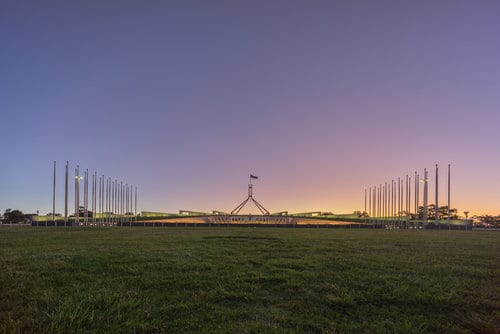
After ten years of turbulence in climate and energy policy Australia is entering a crucial 18-month period. For the electricity sector, the need for a stable policy framework has become urgent. But policy stability isn’t just dependent on bipartisan support, welcome though this would be.
The sectoral transformation implied by Australia’s commitments under the Paris Agreement is best delivered by a policy package that sets a clear pathway to net zero emission power by mid-century.
Recognition of this endpoint is starting to enter the mainstream. The Prime Minister and the Leader of the Opposition have both articulated the need for climate policy to achieve net zero emissions (although they have not yet agreed on the date by which this must happen).
Peak associations representing business, welfare, unions and the environment joined together to support this goal last year.
Next Friday, Australia will be among the 130 countries signing the Paris Agreement, in which we and the rest of the world have committed to limit global warming to 1.5-2°C above pre-industrial levels. This temperature range requires net zero energy emissions by 2050. The next government will have a lot of work to do to deliver on these commitments.
Both parties have indicated they will be conducting major reviews of energy policy within 12 months of the election. To have any chance of ending policy instability, these reviews must address the long-term task of decarbonising our power supply.
How should this be done? The Climate Institute’s report, A Switch in Time, out today, argues that the sort of carbon price that might eventually emerge with bipartisan support will be far too weak to do the job on its own.
A modest carbon price that reaches $40 per tonne by 2030 might help achieve the government’s current 2030 target, but would also blow 98 per cent of the sector’s thirty-year carbon budget and cause another slump in clean energy investment (this is the Weak Start Carbon Price scenario in the graph below).
After a decade of stagnation, the emission reduction effort that would be required thereafter is massive: 80 per cent of existing coal stations would have to be closed in five years and clean energy construction would have to abruptly scale up four-fold. This switch would impose huge shocks on the power system and the economy, not to mention coal station regions. But this is completely avoidable.

There is no politically realistic scenario where a carbon price can drive the necessary change alone (the price would need to be $70-100 per tonne). Even if this may emerge as a possibility, investors are unlikely to have enough faith in its durability to bank on it.
Fortunately there are plenty of other options, and we examine some under consideration.
One essential component is an orderly phase-out of existing high-carbon generators. Predictable, gradual retirement of coal generators is far more desirable than waiting around for one or more to go bust – or being forced to close them all at once when the climate constraints become impossible to ignore (as Figure 2 indicates). The difficulties facing the communities of Port Augusta and Leigh Creek in South Australia should serve as a warning to all governments that preparation is far better than scrambling for a plan after the fact.
We also need to make sure that the generation coming in to replace coal-fired power is clean enough to meet our emission commitments – and that enough of it is built to make the switch from dirty to clean as smooth as possible. And we still need a carbon price, even if it is a low one. Prices and limits on emissions remain essential to ensure polluters take responsibility for their pollution.

Such measures combine in our Clean In Carbon Out scenario. This adds on top of the weak carbon price a 50 per cent Clean Energy Target by 2030 (essentially an expanded RET) and a 45-year lifetime limit on operating coal-fired power stations. This policy package reduces by half the gap between the weak carbon price and a <2°C pathway.
It achieves roughly a 45 per cent reduction in electricity emissions by 2030. This is in line with the Climate Change Authority’s recommended minimum national 2030 target, which is under consideration by the ALP. However, this still uses up 79 per cent of the sector’s thirty-year carbon budget by 2030.
The Low Demand version of the same policy package shows how important energy efficiency could be in achieving our emissions goals (and, importantly, minimising costs for everyone). But the impact of low demand on the wholesale electricity market – essentially, increasing the risk of surplus capacity – could deter clean energy investment, so the interaction of these energy efficiency and clean energy must be recognised and managed.
We can manage this transition in ways that provide for communities and workers, support the sustained growth of our clean energy industries, and minimise the risk of economic shocks across the board. Australians deserve no less.
But this research underscores the need for a fully stocked policy toolkit. We need policies that start gradually phasing out all existing coal stations by 2035; that replace coal generation with zero or near-zero emission energy, provide a well-funded and well-planned structural adjustment package for communities affected by generator closure; strategically deploy energy efficiency policies to minimise costs to energy users and further reduce emissions; and include a carbon pricing mechanism that is capable of scaling up over time to provide a bankable signal for investment consistent with net zero emissions by mid-century.
This package may not be as elegant as a strong, reliable carbon price. But it’s a lot more realistic. And at this point, realistic, practical policy is what the electricity system desperately needs to get on its journey to net zero emissions.
The Climate Institute’s A Switch in Time report was released this morning.
Olivia Kember is National Policy and Research Manager at The Climate Institute.







